Going to the Moon!
Melbourne, Fl- Jul 2009 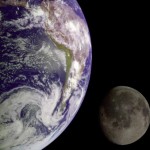 Robots, rovers, and landers went to the moon in the late 1960s and will start returning in numbers through the next 10 years. They will prepare the way for man’s return in the 2020s. Besides nations such as Russia, the United States, Japan, and India funding Lunar missions, there are several private enterprises seeking to land a rover on the moon. You have to get to the moon to do business there.
Robots, rovers, and landers went to the moon in the late 1960s and will start returning in numbers through the next 10 years. They will prepare the way for man’s return in the 2020s. Besides nations such as Russia, the United States, Japan, and India funding Lunar missions, there are several private enterprises seeking to land a rover on the moon. You have to get to the moon to do business there.
We have several methods to reach the moon, with the differences being in how much energy you can afford. On one extreme, brute force will get you to the moon in about a day and a half. The former Soviet Union had this capability. On the other end, the journey could take over a year by using the attractive pull of celestial bodies. This is very efficient but tricky to get exactly right, and risky because the time in space is long. We will explain a less risky and more moderate energy model to reach the moon. This was the method used for the US moon landings.
Going to the moon is an interesting problem in hitting a moving target. First your lift rocket with payload leaves Earth and then orbits until it is at the right time and place. When you are ready to send it off to the moon, you fire your lunar rocket and leave your lift rocket behind to eventually reenter the atmosphere and burn up. You have now entered the Translunar phase of the journey. See figure 1, steps 1, 2. and 3.
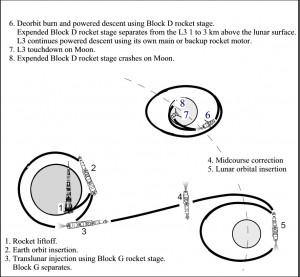
Figure 1
8 steps to reach the moon
(figure 1 adapted from http://commons.wikimedia.org/wiki/File:Mir-14.jpg)
When we are about half way to the moon, you fire little rockets to correct our course so that we enter an orbit around the moon. See figure 1, steps 4 & 5
At just the right time and place we need to turn around and fire the rocket again to slow our speed enough to cause us to spiral down to the moon’s surface. At about 3 kilometers (1.86 miles) above the moon you discard the spent rocket so it will not be in the way of your landing rocket. The spent rocket will crash into the moon, harmlessly we hope. See figure 1, steps 6, 7, & 8.
When about 2 kilometers (1.24 miles) from the moon’s surface you need to slow us down more to land, so you fire our landing rocket and control our descent until we softly touch down.
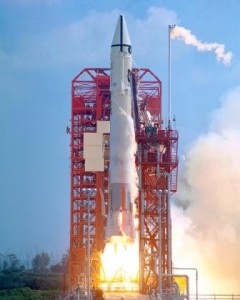
Figure 2
The Atlas-Centaur 10, shown in figure 2, carried the Surveyor 1 spacecraft. It lifted off from Pad 36A on May 30, 1966. The purpose of the Surveyor 1 mission was to scout the lunar surface for future Apollo manned lunar landing sites.
In figure 3, Conrad examines Surveyor III on November 20, 1969.
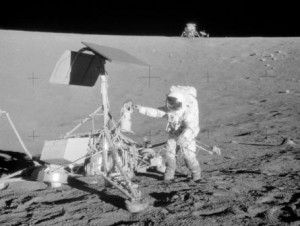
Figure 3
Our cross destined for the moon will ride on a robot inside a lunar Lander aboard a private lift vehicle. The robot will look entirely different from the Surveyor (above) because the robot will be a “Rover” , using wheels so it can roam around. TV cameras will transmit pictures to Earth, including pictures of the cross placed by the Rover.
All pictures referenced here are from the Wikimedia Commons. Commons is a freely licensed media file repository. For more info visit Wikipedia-Surveyor
Cross Exists in Whirlpool Galaxy
 This 1992 enhanced X-ray image of the core of the nearby spiral galaxy M51, taken with the Wide Field Planetary camera (in PC mode) on NASA’s Hubble Space Telescope, shows a striking , dark “X” silhouetted across the galaxy’s nucleus. The “X” is due to absorption by dust and marks the exact position of a black hole which may have a mass equivalent to one-million stars like the sun. The darkest bar may be an edge-on dust ring which is 100 light-years in diameter. The edge-on torus not only hides the black hole and accretion disk from being viewed directly from earth, but also determines the axis of a jet of high-speed plasma and confines radiation from the accretion disk to a pair of oppositely directed cones of light, which ionize gas caught in their beam. The second bar of the “X” could be a second disk seen edge on, or possibly rotating gas and dust in MS1 intersecting with the jets and ionization cones.
This 1992 enhanced X-ray image of the core of the nearby spiral galaxy M51, taken with the Wide Field Planetary camera (in PC mode) on NASA’s Hubble Space Telescope, shows a striking , dark “X” silhouetted across the galaxy’s nucleus. The “X” is due to absorption by dust and marks the exact position of a black hole which may have a mass equivalent to one-million stars like the sun. The darkest bar may be an edge-on dust ring which is 100 light-years in diameter. The edge-on torus not only hides the black hole and accretion disk from being viewed directly from earth, but also determines the axis of a jet of high-speed plasma and confines radiation from the accretion disk to a pair of oppositely directed cones of light, which ionize gas caught in their beam. The second bar of the “X” could be a second disk seen edge on, or possibly rotating gas and dust in MS1 intersecting with the jets and ionization cones.
The size of the image is 1100 light-years.
Incorporated July 21, 2009
July 29, 2009 by Clarknator
Filed under Foundation
COM = Cross on the Moon
COM filed papers of incorporation in the State of Pennsylvania on July 20th, 2009. This was 40 years after the first man stepped on the moon. We filed papers with the IRS 5 days later for tax exemption. We expected a favorable letter before 2009 tax returns were due April 15, 2010. Instead, we received our tax-exempt status on July 22, 2011.
Our Fed ID is 27-0464654
Our State ID is 3894863
We filed with the Commonwealth of Pennsylvania as a charitable organization. We also published our intent to incorporate as a non-profit with the Pittsburgh Legal Journal and the Pittsburgh Post Gazette.
COM has 5 directors from which we draw three officers: executive director (president), secretary, and treasurer. No board member receives a salary.
Laser Retro-reflector remains on moon
July 29, 2009 by Admin
Filed under tech history
 July 20, 2004: The most famous thing Neil Armstrong left on the moon 35 years ago is a footprint, a boot-shaped depression in the gray moondust. Millions of people have seen pictures of it, and one day, years from now, lunar tourists will flock to the Sea of Tranquility to see it in person. Peering over the rails … “hey, mom, is that the first one?”
July 20, 2004: The most famous thing Neil Armstrong left on the moon 35 years ago is a footprint, a boot-shaped depression in the gray moondust. Millions of people have seen pictures of it, and one day, years from now, lunar tourists will flock to the Sea of Tranquility to see it in person. Peering over the rails … “hey, mom, is that the first one?”
Will anyone notice, 100 feet away, something else Armstrong left behind?
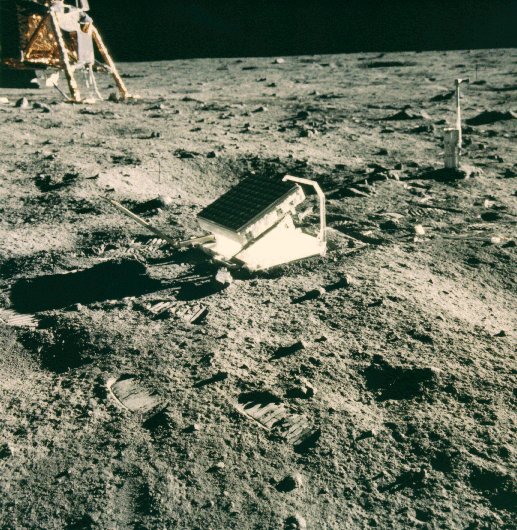 Ringed by footprints, sitting in the moondust, lies a 2-foot wide panel studded with 100 mirrors pointing at Earth: the “lunar laser ranging retroreflector array.” Apollo 11 astronauts Buzz Aldrin and Neil Armstrong put it there on July 21, 1969, about an hour before the end of their final moonwalk. Thirty-five years later, it’s the only Apollo science experiment still running.
Ringed by footprints, sitting in the moondust, lies a 2-foot wide panel studded with 100 mirrors pointing at Earth: the “lunar laser ranging retroreflector array.” Apollo 11 astronauts Buzz Aldrin and Neil Armstrong put it there on July 21, 1969, about an hour before the end of their final moonwalk. Thirty-five years later, it’s the only Apollo science experiment still running.
Right: The Apollo 11 lunar laser ranging retroreflector array. [More]
University of Maryland physics professor Carroll Alley was the project’s principal investigator during the Apollo years, and he follows its progress today. “Using these mirrors,” explains Alley, “we can ‘ping’ the moon with laser pulses and measure the Earth-moon distance very precisely. This is a wonderful way to learn about the moon’s orbit and to test theories of gravity.”
Here’s how it works: A laser pulse shoots out of a telescope on Earth, crosses the Earth-moon divide, and hits the array. Because the mirrors are “corner-cube reflectors,” they send the pulse straight back where it came from. “It’s like hitting a ball into the corner of a squash court,” explains Alley. Back on Earth, telescopes intercept the returning pulse–“usually just a single photon,” he marvels.
The round-trip travel time pinpoints the moon’s distance with staggering precision: better than a few centimeters out of 385,000 km, typically.
Targeting the mirrors and catching their faint reflections is a challenge, but astronomers have been doing it for 35 years. A key observing site is the McDonald Observatory in Texas where a 0.7 meter telescope regularly pings reflectors in the Sea of Tranquility (Apollo 11), at Fra Mauro (Apollo 14) and Hadley Rille (Apollo 15), and, sometimes, in the Sea of Serenity. There’s a set of mirrors there onboard the parked Soviet Lunokhud 2 moon rover–maybe thecoolest-looking robot ever built.
In this way, for decades, researchers have carefully traced the moon’s orbit, and they’ve learned some remarkable things, among them:
(1) The moon is spiraling away from Earth at a rate of 3.8 cm per year. Why? Earth’s ocean tides are responsible.
(2) The moon probably has a liquid core.
(3) The universal force of gravity is very stable. Newton’s gravitational constant Ghas changed less than 1 part in 100-billion since the laser experiments began.
 Physicists have also used the laser results to check Einstein’s theory of gravity, the general theory of relativity. So far, so good: Einstein’s equations predict the shape of the moon’s orbit as well as laser ranging can measure it. But Einstein, constantly tested, isn’t out of the woods yet. Some physicists (Alley is one of them) believe his general theory of relativity is flawed. If there is a flaw, lunar laser ranging might yet find it.
Physicists have also used the laser results to check Einstein’s theory of gravity, the general theory of relativity. So far, so good: Einstein’s equations predict the shape of the moon’s orbit as well as laser ranging can measure it. But Einstein, constantly tested, isn’t out of the woods yet. Some physicists (Alley is one of them) believe his general theory of relativity is flawed. If there is a flaw, lunar laser ranging might yet find it.
Right: Lunar laser ranging at the McDonald Observatory. [More]
NASA and the National Science Foundation are funding a new facility in New Mexico, the Apache Point Observatory Lunar Laser-ranging Operation or, appropriately, “APOLLO” for short. Using a 3.5-meter telescope with good atmospheric “seeing,” researchers there will examine the moon’s orbit withmillimeter precision, 10 times better than before.
“Who knows what they’ll discover?” wonders Alley.
More and better data could reveal strange fluctuations in gravity, amendments to Einstein, the “sloshing” of the moon’s core. Time will tell … and there’s plenty of time. Lunar mirrors require no power source. They haven’t been covered with moondust or pelted by meteoroids, as early Apollo planners feared. Lunar ranging should continue for decades, perhaps for centuries.
Picture this: Tourists in the Sea of Tranquility, looking up at Earth. Half of the planet is dark, including New Mexico where a pinprick of light appears. A laser.
“Hey, mom,” stepping over a footprint, “what’s that star?”
Solar-Powered Moon Rover to Explore Apollo Landing Site
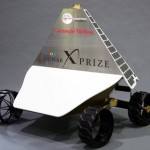 July 22, 2009 -Ariel Swartz (Inhabit contributing writer)
July 22, 2009 -Ariel Swartz (Inhabit contributing writer)
Solar power doesn’t have to be limited to Earth-based gadgets — at least, not if Carnegie Mellon roboticist Dr. William Whittaker has anything to say about it. Whitaker and Astrobiotic Technology have teamed up to develop a solar rover prototype that will explore the Apollo moon landing site and find out how materials used in the mission have fared over all these years.
The rover, which has been entered in the competition for the $25 million Google Lunar X Prize, features two motors in the hub of each wheel, a flat radiator tilted up to the sky on one side, and a half-cone of solar generators on the other side to power the wheels, run computers, and beam stereo HD video back to us on Earth.
There’s just one problem left to figure out: how to protect the rover from minus 240 F lunar nights. The team is experimenting with different ways to package lithium ion batteries to be able to function after two weeks of exposure to air that is nearly as cold as liquid nitrogen. Stay tuned to find out the results of the team’s experiments when the solar rover lands on the Apollo moon site in 2011!
Source: Inhabitat web site
Robotics pioneers close in on moon
 July 21, 2009 -Mike Gronin, Pittsburgh Tribune-Review
July 21, 2009 -Mike Gronin, Pittsburgh Tribune-Review
Executives of Astrobotic Technology in Oakland believe they are a bit closer to winning a $20 million race to the moon.
Company Chairman William “Red” L. Whittaker, a Carnegie Mellon University robotics professor, and his colleagues on Monday showed off their third prototype of a robot they plan to send to the moon in May 2011.
The winner of the Google Lunar X PRIZE awarded by a California nonprofit that encourages innovation will be the first robot to land on the moon, travel 500 meters on the lunar surface and send images and data back to Earth.
Forty years ago yesterday, Apollo 11 astronauts became the first humans to land on the moon.
What’s special about this prototype, said Astrobotic spokesman David Gump, is that it should be able to withstand the intense heat a lunar day exerts.
“Before we weren’t solving the problem of the robot cooking itself at noon,” Gump said. That’s a particularly significant problem because the Astrobotic team plans to drop the Red Rover robot at Apollo 11’s landing site, which is at the moon’s equator. Temperatures there rise above 270 degrees Fahrenheit.
“There’s a lot of heat coming from the sun and a lot of heat bouncing off the lunar soil,” Gump said.
The Red Rover will diffuse heat in two ways. First, it will keep a cool side aimed away from the sun to radiate heat off to the black sky, Gump said. Secondly, by using composite structures made from carbon fiber tape and resin, the robot will be able to transmit heat from its hot to cold side more efficiently.
Nineteen teams with members from 35 countries are developing robots, said Will Pomerantz, senior director for space prizes for the X PRIZE Foundation in Playa Vista, Calif. Teams must be at least 90 percent privately funded. To collect the full $20 million, the goal must be achieved by Dec. 31, 2012.
“The contest is coming extremely well,” Pomerantz said. “It’s been a little under two years since we announced it and we’re a lot farther than we thought we’d be. It was designed to be a six- or seven-year journey. The teams are more diverse, better and bringing more talent to the table.”
Whittaker credits the nature of the contest.
He likens it to the $25,000 Raymond Orteig offered for the first nonstop aircraft flight between New York and Paris, which Charles Lindbergh won in 1927.
“Flying was a nascent technology,” Whittaker said. “It couldn’t attract a passenger service or investment by Wall Street. All that changed instantly in that moment of actualization. Flying became a darling experience. Everyone wanted to fly or take a flight. It gave rise to the vision of intercontinental flight and improved the quality of airplanes.”
That’s what’s about to happen once the Lunar X PRIZE teams figure out how to reach the moon without the help of NASA, said Bob Richards, CEO of Odyssey Moon, an Isle of Man company working to commercialize lunar travel.
“We’re going to make the moon relevant,” Richards said. “We view the moon as an eighth continent that’s largely been unexplored. Its proximity to Earth means it’s close enough to have an economy. The Earth and moon will be like two islands in an archipelago”
Source: Tribune-Review
The countdown’s on for humans to return

July 20, 2009 – David Templeton, Pittsburgh PostGazette
Plans are under way for humans to return to the moon “no later than 2020,” says NASA. And if and when it happens, people may remain there forever.
As a permanent outpost for humans, the moon may become not only a destination for science and exploration, but also for economic endeavors, including mining of platinum-based metals or collection of helium-3 for fusion-energy reactors back on Earth.
In time, the moon will have its own transportation system, energy grid and housing plans powered by solar-panels with fuel centers to provide rocket fuel for daily blastoffs to Earth and Mars.
Projections wax and wane about when people will revisit the moon and what will happen when they do.
Reader forum
What do you remember about the July 20, 1969 moon landing, and what do you think of the U.S. space program’s evolution since then? Comments in our reader forum.
But the NASA Authorization Act of 2005 has established a program to develop a sustained human presence on the moon, with an emphasis on “exploration, science, commerce and U.S. pre-eminence in space.” That program will serve “as a stepping stone to future exploration of Mars and other destinations” throughout the solar system.
NASA’s Web site says work on the moon will enable eventual settlement, with an emphasis on lunar activities that hold a direct benefit to life on Earth.
Human settlement of the moon represents an even bigger step for people and a more humongous leap for humankind. And people now are preparing to make that leap.
William “Red” Whittaker, Carnegie Mellon University roboticist and chairman of Astrobotic Technology Inc., holds a robot-centric view of the universe and says robots will work for years preparing a lunar landing base, energy infrastructure and housing before humans return there. He believes humans will return in about 2022.
“The early presence will be machines, not people,” Dr. Whittaker said. “Robots will be the agents of exploration.”
David Gump, Astrobotic president, said the company hopes to send a robot to the moon and win the $20 million Google Lunar X Prize in May 2011. Eventually it will send other robots to explore the moon, prepare the way for humans and mine valuable resources.
The first people to return will share the moonscape with a troop of robots doing excavation, among other chores. A lunar colony could be situated on the rim of a crater, possibly the Shackleton Crater at the moon’s South Pole, where, theories hold, water may exist.
NASA says the lunar South Pole has elevated quantities of hydrogen, which could be in the form of ice. The South Pole also has areas with greater than 80 percent sunlight and less extreme temperatures.
That first human habitats could be an inflatable structures already in development, or robot-built habitats buried under moon dirt known as regolith. Such a structure below the surface would protect people against solar and cosmic galactic radiation that can cause cancer, cataracts, acute radiation sickness, hereditary effects and damage to the central nervous system. A long-term plan would involve transforming lunar lava tubes — tunnels created by lava flow — into underground homes for people.
Robots could explore lava tubes long before humans arrive. Constructing walls and protective doors would make it possible to fill the lava tubes with oxygen and create moderate temperatures.
As for a landing site, Dr. Whittaker and Mr. Gump said robots could position rocks to provide a landing pad and prevent high-speed blasts of regolith during touchdowns and liftoffs. Robots also could build a horseshoe-shaped bank of regolith around the landing pad to protect habitats, people and equipment from flying regolith.
Solar panels would provide electricity. A fuel station would use electrolysis to divide lunar water into liquid hydrogen and liquid oxygen to power rockets. Oxygen generators would sustain human life.
On the moon, astronauts would use smaller vehicles to cruise the outpost and larger ones for long-distance travel and exploration.
Once settled, humans could explore and mine. Helium-3, a gas rare on Earth but common on the lunar surface, can be used in fusion energy with no radioactive risk or threat of global warming. Mr. Gump said one large shuttle-load of helium-3 from the moon could meet Earth’s total energy needs for a year.
Also, the moon would be a low-gravity base to send astronauts to Mars and elsewhere in the solar system. The moon’s perfect vacuum also would allow for easy production of drugs that require expensive vacuum chambers on Earth.
Dr. Whittaker said humans always have found ways to survive in unusual environments, be it the New World after 1492, Antarctica throughout the 20th century or current efforts to survive at the bottom of the ocean or atop high mountains.
The South Pole in Antarctica could serve as a model for international cohabitation of the moon.
Reaching ever deeper into the future, Mr. Gump said space travel may become as common as airplane travel today. By 2040, humans likely will be on Mars.
“It took a long time for people to think that Kansas, Nebraska and the Dakotas could support life,” Mr. Gump said. “Now it’s the breadbasket of the entire planet. It took people spending time there to find out what is good there. It’s the same with the moon.”
So in decades to come, he said, human lunar outposts could expand into ever larger domed areas filled with oxygen and featuring entertainment, housing and business. It would be a futuristic scenario with humans donning wings to fly inside the dome.
It’s a bird. It’s a plane. It’s a superhuman display of our ability to adapt.
Magnificent Desolation
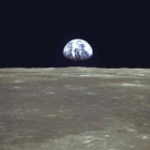
July 14, 2009 | By Rob Verger, Globe Correspondent
On July 20, 1969, Buzz Aldrin and Neil Armstrong became the first humans to set foot on the moon. Four days later, completing a journey of more than 800,000 miles, Aldrin, Armstrong, and Michael Collins splashed down in the Pacific. The world was different afterward, and so were the lives of the three men.
In a new memoir written with Ken Abraham, “Magnificent Desolation: The Long Journey Home From the Moon,’’ Aldrin, 79, discusses the moon landing and subsequent events. The thrust of the book is about his struggles with depression, as well as alcoholism and recovery. He’ll talk about those topics tonight at McLean Hospital’s annual dinner at Boston’s InterContinental Hotel, six days before the 40th anniversary of his moon walk.
The book’s title comes from a phrase Aldrin uttered while on the moon’s surface 40 years ago. First he had used the word “beautiful’’ to describe the moonscape, he explained in a phone interview. “Then I felt that’s not really right,’’ he said. “It’s magnificent, that we’re here, that humankind has culminated in being able to do this. But there isn’t a place on Earth that is more desolate than what we were looking at. No life whatsoever. There wasn’t any way to simulate the mono-color of the moon, and the black sky.’’
Aldrin earned a doctorate from MIT in 1963. Last month he performed, as a narrator, with the Boston Pops. Tonight he’ll receive the McLean Award, given “to honor individuals who have made great strides in raising awareness of psychiatric illness.’’
What advice might he have for others who are struggling with alcoholism or depression? “Well, I’ve elected to do that more by role model than by trying to have generalities of behavior, because my case is kind of unusual,’’ he said with a chuckle.
“The number one thing that you have to do is to recognize a problem, and that’s something that you have to do, and people on the outside can try and help you, and you build up defenses against that, and that’s called denial,’’ he added. “That’s why the first step is admit it to yourself that you needed help somewhere else.’’
But it’s hard to talk with Aldrin without wanting to know more about that seminal event four decades ago, when he saw the Earth from the moon. “
You know, you can be very esoteric, and describe the orb of blue and white and tanned, sitting there, majestically, in the black velvet background, and no stars to accompany it, and that’s a poet’s description, I guess,’’ he said. “But the spatial, astronomically-aware engineering operator is familiar with space and time, and we put that into perspective, and it sounds kinda boring, but yeah, there’s the Earth up there, and yes it is four times bigger than we would see the moon from the Earth, and yeah it’s got color to it. And oh yes, by the way, there’re about 6 billion people back there, and there are only three of us here.’’
© Copyright 2009 The New York Times Company Source here
